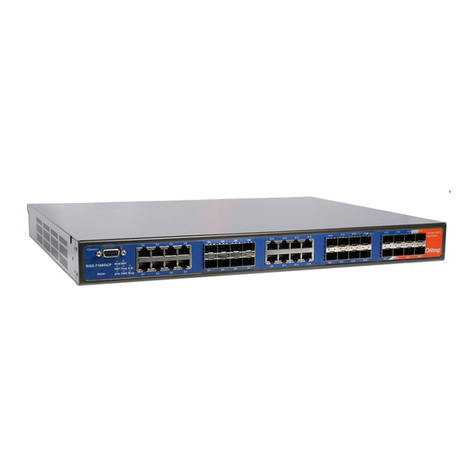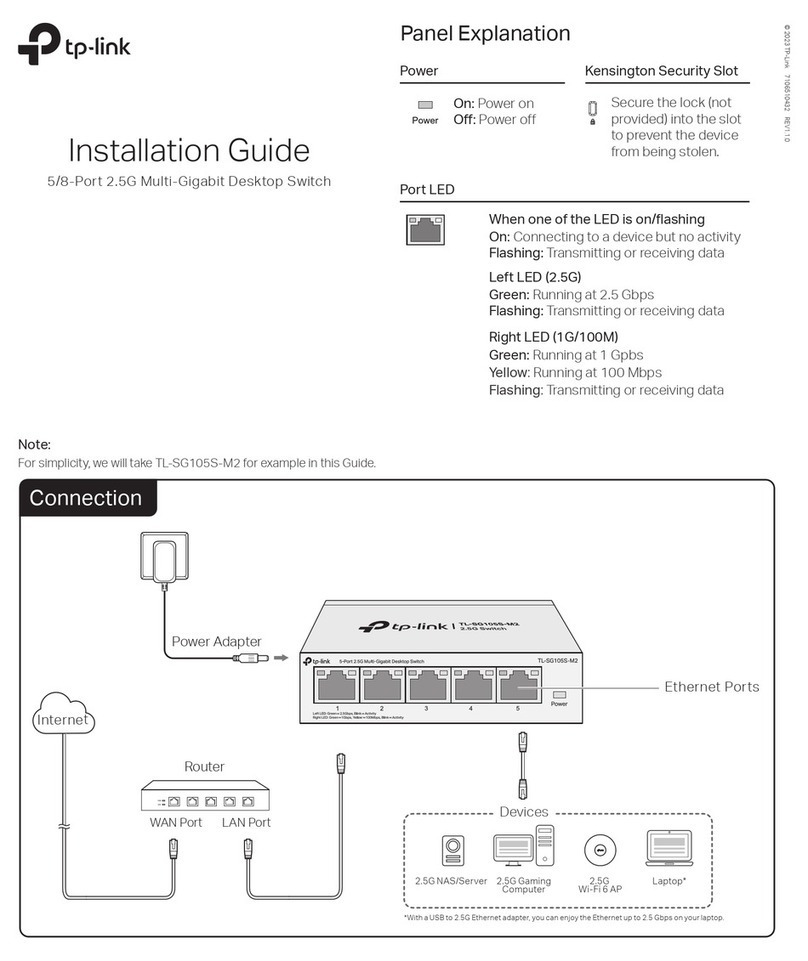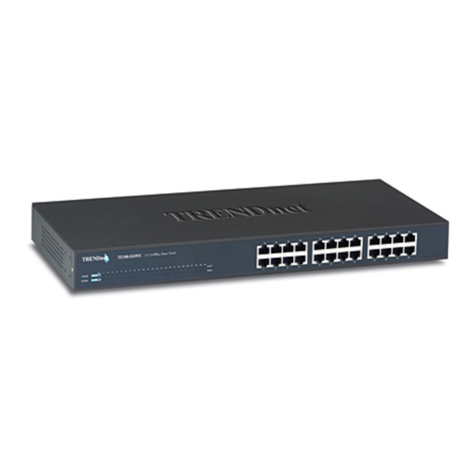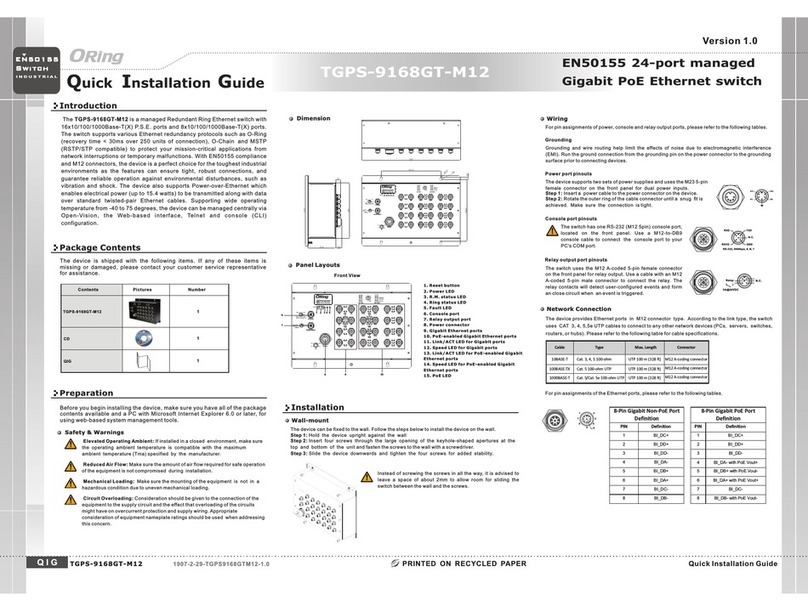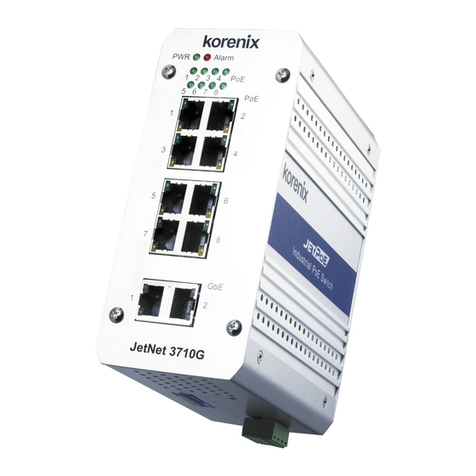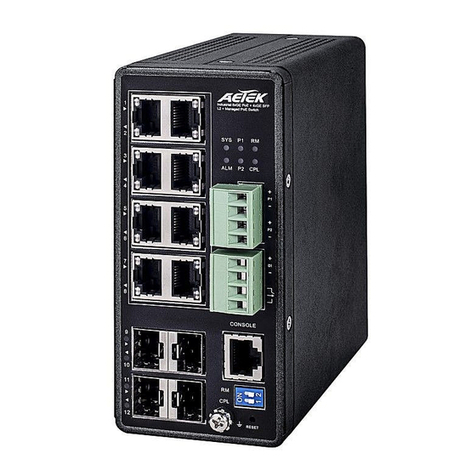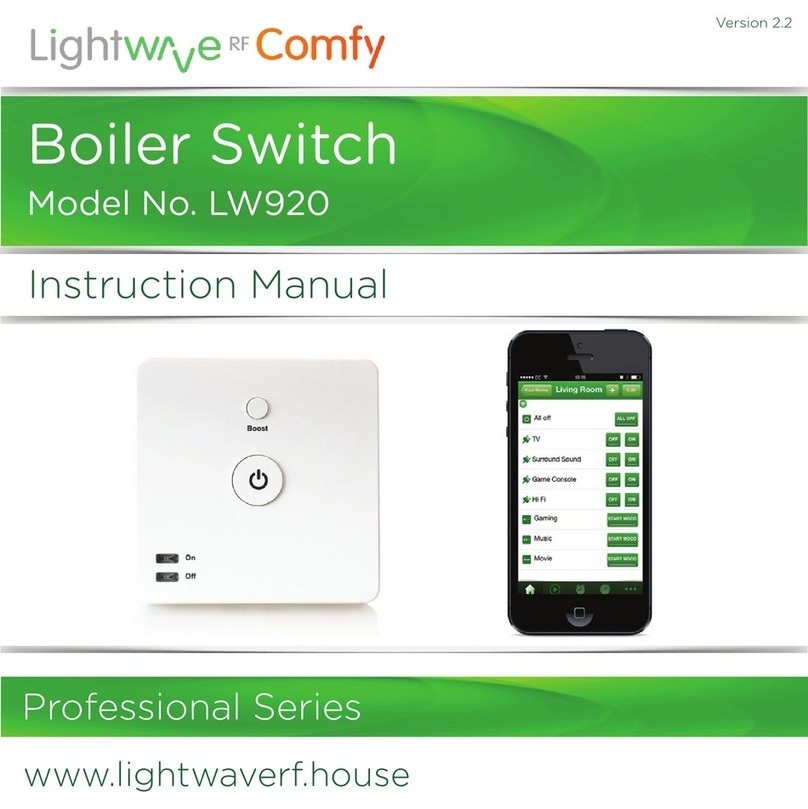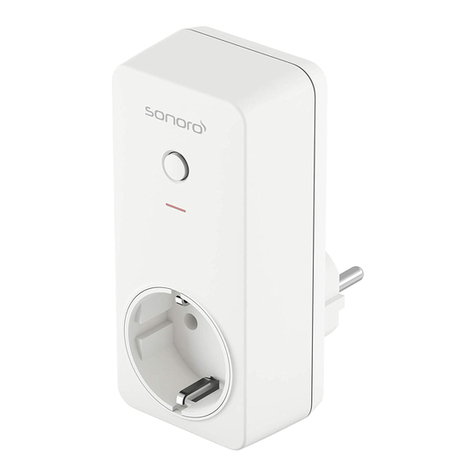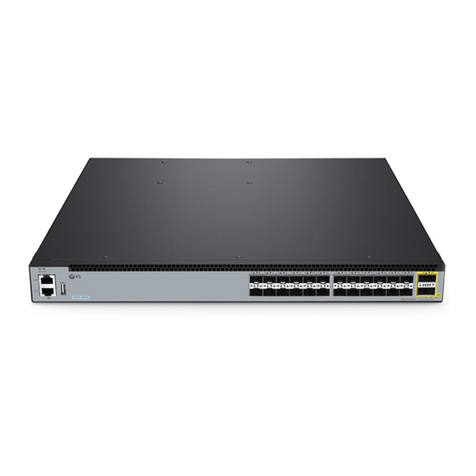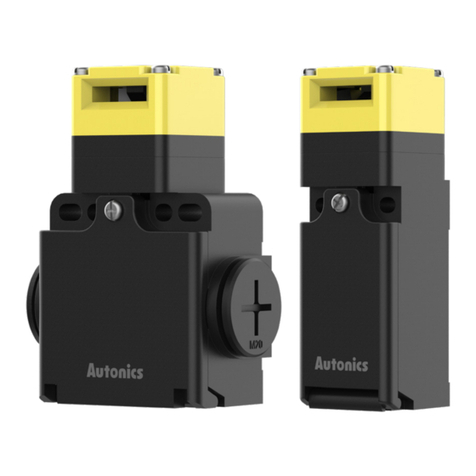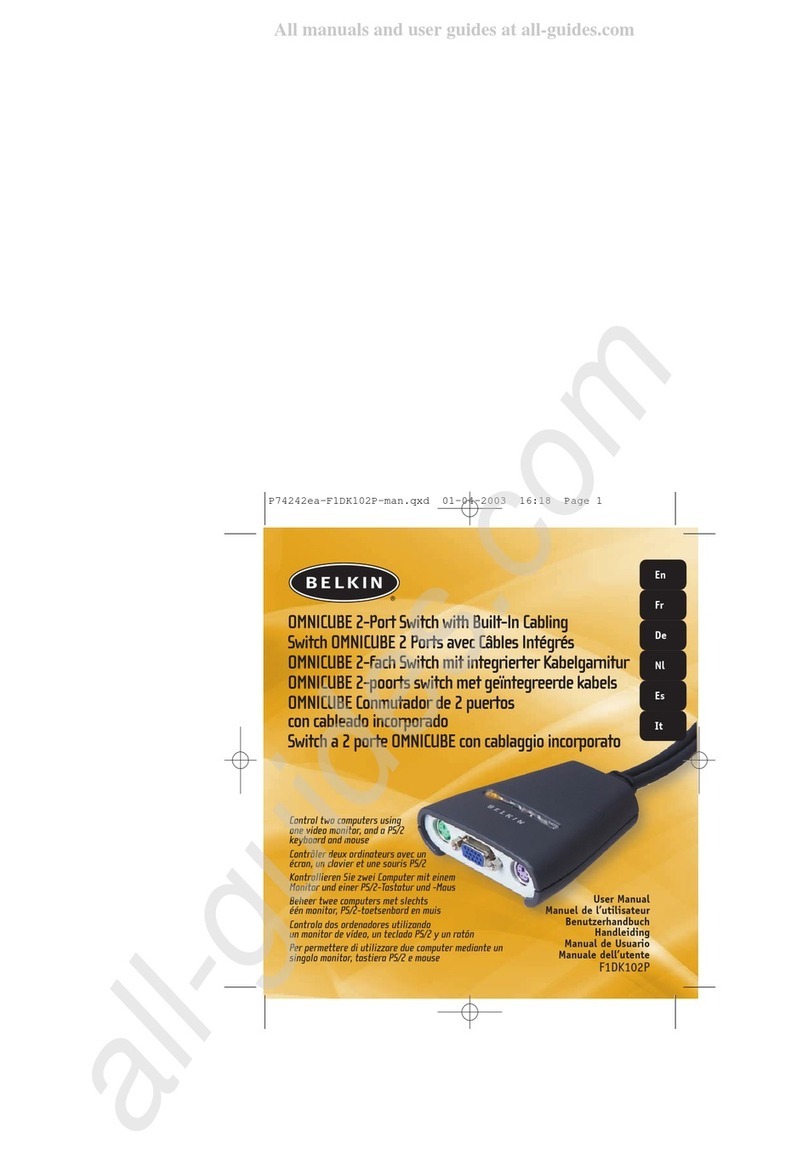Static Power iSTS F1 User manual

iSTS
Model F1
User Manual
Wall Mount Static Transfer Switch
iSTS F1 –User Manual R03

STATIC POWER Pty Ltd
ABN 42 101 765 913
iSTS
F1 –User Manual
Post to:
Box 2003
Research Delivery centre
Research, VIC 3095 - Australia
Manufactured at:
5 Candlebark Court
Research, VIC 3095
Australia
Contact us:
+61 3 9437 0494
support@staticpower.com.au
www.staticpower.com.au

CONTENTS
1. SAFETY INSTRUCTIONS 2
1.1 Introduction 2
1.2 Transport, Storage, Unpacking 2
1.3 Installation 2
1.4 Maintenance Bypass 3
1.5 Fire Regulations 3
1.6 Standards Applied & Conformity 3
1.7 Warranty 3
2. SYSTEM OVERVIEW & OPERATION 4
2.1 Description 4
2.2 Overview 4
2.3 Operational Parameters 5
2.4 Line Diagram: Single phase/2-Poles 5
3. OPERATION 6
3.1 Safety 6
3.2 Installation 7
3.4 Synchronism 8
3.5 Start-up 8
4. USER INTERFACE 9
4.1 Mimic Display 9
4.2 User InterfaceTerminals 10
4.3 Preferred Switch
4.4 Confirm Operation
10
10
5. MAINTENANCE BYPASS 11
5.1 Overview 11
5.2 Maintenance Bypass Procedure 11
5.3 Reinstatement from Maintenance Bypass 11
6. WEB BROWSER INTERFACE 12
6.1 Home Page 12
6.2 Control Panel 12
6.3 Email 13
7. FAULT Guide 14
7.1 Fault Codes 14
7.2 Load Fault 14
8. RECOMMENDED MAINTENANCE SCHEDULE 15
9. SPECIFICATIONS 16
iSTS
F1 –User Manual
Page 1

1
. SAFETY INSTRUCTIONS
1
.1 Introduction
Some
aspects of this manuals contents may differ to the equipment as supplied due to technical
improvements,
specific
model variations etc. If in any doubt in respect to the procedures and safety issues consult
the
manufacturer
and do not proceed until clarification is received.
This
manual contains important instructions that should be followed and fully understood before proceeding
and
commissioning
and operation to prevent harm to personnel and equipment.
Installation
and commissioning should be carried out only by qualified and experienced electricians.
The
iSTS
should be operated by technically qualified personnel that are authorized, experienced and have
knowledge
and
understanding of the equipment and the critical loads, using the documented procedures.
Read
this whole document thoroughly. Understand every aspect before proceeding. Request further assistance
if
you
do not understand any aspect of the operation of the iSTS. Support and contact numbers are at the end
of
the
manual.
These
instructions cover normal operation in the automatic as well as in manual modes. Special
operating
conditions,
such as short circuit tests, input supplies, etc., are not covered in this document. These
operations
require
comprehensive knowledge of the overall system and should be carried out by properly qualified,
skilled
and
competent service personnel only.
1
.2 Transport, Storage, Unpacking
Procedure
for Receiving Shipment:
▪If the ShockWatch indicator is RED, it does not mean that damage has occurred, it only indicates that
the
carton received an impact or movement. If the indicator on the label is RED, make a notation to that
effect
on the bill of lading or delivery receipt or document. Examine contents immediately for possible damage.
If
damage is discovered, inform carrier immediately and follow normal procedure for a carrier inspection
and
filing of a concealed damage claim
▪If the packaging is damaged unpack carefully and inspect the unit. We recommend that if there is any sign
of
mechanical damage that the unit not be powered up; but, returned for re-processing
▪If damage is discovered, inform carrier immediately and follow normal procedure for a carrier inspection
and
filing of a concealed damage claim to the courier or your insurance company.
▪Take a picture of the carton and contents as a record.
▪If the packaging is OK, then please keep the packaging in a secure place in case the unit needs to be
returned
for repair.
1
.3 Installation
The
following instructions are provided for the personal safety of operators and also for the protection of
the
described
product and connected equipment.
▪Observe the prescribed accident prevention and safety rules for the specific application.
▪When installing the iSTS strictly observe all information on technical data and operating conditions.
Comply
with all warnings, and strictly follow the procedures and practices as described in this manual.
▪This iSTS is intended to be used in a controlled indoor environment and free of conductive contaminants
and
protected against animal intrusion.
▪It is important that the unit has adequate ventilation. Maintain air movement around and through the
unit.
Do not block the air vents or restrict airflow over the heatsinks.
▪The unit must be placed in a sufficiently ventilated area; the ambient temperature should not exceed 55°
C
(130°F).
▪Do not install the iSTS in an excessively humid environment or near water, relative humidity should
not
exceed 90%at 45°C (110°F).Do not put outdoors.
▪Avoid rain, spilling liquids or dropping any foreign object into the iSTS.
▪Once the connections have been made on the terminals, all terminal covers must be replaced
before
operation.
▪Connecting cables must be supported.
▪Earth connection must be checked for safe function after assembly.
iSTS
F1 –User Manual
Page 2
iSTS F1

1
.5 Fire Regulations
Should
a fire break out inside the system a fire extinguisher with CO2or similar non-conductive, non-
corrosive
and
inert gas must be used. Do not inhale vapours.
1
.6 Standards Applied & Conformity
The
iSTS B2 conforms to the following standards and European Council Directives:
Standards to which conformity declared:
▪IEC 60950-1
Information technology equipment Safety
- General requirements
▪IEC 62310-1
Static
transfer systems (STS) - General and safety requirements
▪IEC 62310-2
Static transfer systems (STS)
- Electromagnetic compatibility (EMC) requirements
▪IEC 62310-3
Static transfer systems (STS)
- Part 3: Method for specifying performance and test
requirements
Application of Council Directives:
▪2006/95/EC
Low
Voltage Directive
▪1992/31/EEC
EMC
Directive
▪1993/68/EEC
EMC
Directive amendments
▪2011/65/EU
Hazardous
substances in electrical and electronic equipment - RoHS
iSTS
F1 –User Manual
Page 3
The Standards mentioned above fulfil
the requirements for CE marking
Year of CE marking: 2015-2016
1
.7 Warranty
Static
Power operating through its authorised agents warrants that the standard products will be free of
defects
in
materials and workmanship for a period of 24 months after the date of invoice, or such other period as may
be
specified
.
Should
you require guidance or if the unit does not operate correctly as expected we provide a help desk
service.
This
can be attained by Email or telephone. If the unit is found faulty we will help to identify the cause and
where
necessary
a replacement part will be provided or the unit can be returned for repair. On site services are
not
covered
.
This
warranty does not cover failures of the product which result from incorrect installation, misuse,
alterations
by
persons other than authorized agents or abnormal operating conditions.
More
about warranty: staticpower.com.au/wp-content/uploads/2019/11/Warranty-Statement.pdf
1
.4 Maintenance Bypass
WARNING:
REFER TO THE MAINTENANCE BYPASS SECTION BEFORE ATTEMPTING TO PUT THE UNIT INTO MAINTENANCE
BYPASS MODE.
THE MAINTENANCE BYPASS SWITCH UTILISES MAKE
-BEFORE-
BREAK SWITCHING, INCORRECT OPERATION OF
THE MAINTENANCE BYPASS FEATURES COULD RESULT IN DANGEROUS VOLTAGES OCCURING AND SHORT
CIRCUITS.
iSTS F1

2
. SYSTEM OVERVIEW & OPERATION
2
.1 Description
A
Static Transfer Switch (STS) provides seamless switching between two power sources to provide
interrupted
power
to a critical load.
The
iSTS continuously monitors the supply sources for failure or degeneration and switches automatically to
the
alternate
source as required to protect the load against failure. The break in the supply transition is so short
that
it
is not seen by the critical load. This switching process is undertaken as a break before make
transfer,
preventing
overlapping which can cause large and unpredictable currents. In 4-pole models, all the
active
conductors
and the neutral are switched. In 3-pole models, only the active phases are switched. Thyristors
are
used
to undertake the switching process.
In
the case of downstream load fault conditions, the fault current drawn from the supply may degrade or
damage
the
supply sources; as a consequence should a fault current exist in the load the iSTS will inhibit a transfer to
the
alternate
source even if this causes source supply degradation or loss. This is to ensure that the fault will not
be
transferred
to the alternate supply with the possibility of degrading both sources. The current threshold
for
isolation
is pre-set to approx. 300%of the rated current.
This
unit contains fuses. The fuses are to provide for safe operation even in high fault capacity environments.
It
should
be noted that the fuses are for the protection of the semiconductor switches (SCRs/ Thyristors), not
the
load
. The iSTS does not have any automatic tripping devices, so load discrimination is undertaken in the
primary
and
secondary supply networks.
iSTS
F1 –User Manual
Page 4
2
.2 Overview
The
iSTS is housed in a wall mounted IP54 rated enclosure. Repair is achieved in conjunction with
the
Maintenance
Bypass Switch located at the bottom of the iSTS.
iSTS F1

iSTS
F1 –User Manual
Page 5
2
.3 Operational Parameters
Absolute
Maximum Values
Min
Max
Input
Voltage
100
VAC
264
VAC
Load
Current
0
A
32
A
Input
Synchronisation
-180
°
+
180°
Ambient
Temperature
0
°C
55
°C
Recommended
Values
Min
Max
Input
Voltage
104
/208 VAC
126
/265VAC
Load
Current
0
.5A*
0
–32A
Input
Synchronisation
-15
°
+
15°
Ambient
Temperature
0
°C
45
°C
*Due
to the nature of the silicone controlled rectifiers used in all static transfer switches, some current must be applied to
the
iSTS
to ensure a clean break during transfers.
Overload
Capacity @45°C
Time
200
%
30
s
300
%
1
s
400
%
0
.1s
2000
A
1
cycle
2
.4 Line Diagram: Single phase/2-Poles
iSTS F1

3
. OPERATION
3
.1 Safety
The
iSTS is powered from two separate sources. It is important that you install correct signage with
procedures
within
the enclosure and the immediate vicinity to warn personnel of this aspect and what isolation,
checking
and
precautionary processes, and procedures need to be adopted to make the iSTS and equipment
connected
to
the iSTS safe to work on.
This
equipment receives power from more than one source. Disconnect output and all input sources of
power
from
this equipment before servicing.
Do
not proceed with the installation or operation of the iSTS if it has been damaged. Carefully inspect the
iSTS
for
any damage that may have occurred during shipping, unpacking or during and after any
installation
process
.
Take
care when handling the iSTS and ensure that it is physically supported during the installation process.
At
the
end of the installation process the iSTS should be firmly and securely bolted within the rack.
Ensure
the cables are securely connected and supported and all covers plates are replaced. There should
be
NO
live exposed or accessible contacts that could cause electrical shock if contact is able to be made. This
unit
is
designed for fixed wiring installation only.
This
equipment is not recommended for installation into environments that utilise RCD earth
leakage
detectors
on the inputs of the static transfer switch. Consult Static Power for special considerations.
EARTH CONNECTION IS ESSENTIAL BEFORE WORKING ON CIRCUITS
OR CONNECTING / DISCONNECTING SUPPLIES.
TREAT AC INCOMING LEADS AS LIVE IF DISCONNECTING FROM SOURCE.
iSTS
F1 –User Manual
Page 6
iSTS F1

3
.2 Installation
1. Secure the iSTS to your wall / enclosure / frame using the channel holes with Hex bolts on the
rear
mounting rails of the STS. Use the two bottom holes to further secure the STS.
iSTS
F1 –User Manual
Page 7
3
.3 Cable Termination to the iSTS
1. Attach cables using bolted lug connections to the terminals in the order show below. The terminals have
a
M6/M8 screw
2. To access the input and output terminals open the door of the enclosure and remove the terminal
cover
/GAL plate from the front of the unit. Cables enter from the bottom. Remove the gland plate and
make
holes suitable for glands.
3. Connect Active, Neutral and Earth cables to the respective terminals as marked at the terminals.
Secure
the connections on the terminal blocks, torque the screw to 25Nm /20in-lbs. All cables connecting to
the
STS should be supported by the gland and not strain the point of connection.
4. All electrical connections are to be realized by properly qualified, skilled and competent service
personnel
only.
5. Before replacing the GAL protective cover check all connections and that all ribbon cables are plugged
in
and secure. That nothing has moved out of place during handling and transport. Check all
screw
connections.
6. Before applying power replace all of the GAL panels removed prior, close the door. Check the ratings of
all
sources and cables to the iSTS, make sure that the rated voltage for the unit corresponds to the
ratings
plate and the local supply voltage.
7. Turn the maintenance bypass switch to the bypass position (either to S1 or S2). Close the incoming
source
isolators. (Note the two incoming source isolators provide power to the solid-state portion of the STS
only.
The load will be powered via the maintenance bypass switch.
8. Apply power to the STS. There will be a short 15 second start-up period, after which the iSTS LED mimic
will
show the direction of power flow.
9. Ensure that the LEDs (Green), that show which source is supplying the load is the same as the
Maintenance
Bypass Position. If not use the transfer/ priority selection to transfer to the alternate supply (same
as
maintenance bypass position).
10.Proceed to section 3.5 Start-up to connect the STS to the load from Maintenance Bypass.
When
working on live iSTS, be sure to comply with the applicable national standards and accident
prevention
rules
.
iSTS F1
SUPPLY 1
ELN
OUTPUT
ELN
SUPPLY 2
ELN
Single phase Models

iSTS
F1 –User Manual
Page 8
3
.4 Synchronism
The
smoothest change-over occurs when the supplies are in synchronism, so it is best to make sure the
input
supplies
are in synchronism. Some equipment (like transformers and other items) may saturate when a
transfer
occurs
when not in synchronism. This causes large currents to flow into the load which could cause damage
to
the
transformer, trip protective devices or blow fuses.
The
iSTS is configured to optimize the transfers.
3
.5 Start-up
NOTE
: Due to the nature of SCRs (silicon controlled rectifiers) some load of around 0.5A is required for
correct
operation
. Before testing the operation of this iSTS, make sure this load is applied to the output.
1. Ensure that your two input sources are within the tolerances and in synchronism.
2. If not already done, apply power to both input sources. There will be a short 15 second start-up
period,
after which the iSTS will begin powering your load.
3. Once power availability has been confirmed slowly rotate the STS maintenance bypass switch to the
N
(Normal) position
4. We recommend at this point that you connect to the STS using a laptop computer. Open up a browser
and
make connection via the LAN. We strongly encourage the setting of the date and time so that real
time
event correlation can be undertaken. The Real Time Clock is backed up by a rechargeable coin cell
battery.
If the battery is flat at the time of commissioning it may take several days to re-charge.
5. The ALARM should not be active. If it is check the following conditions that may be active:
-ON Supply 1 when priority is Supply 2
-ON Supply 2 when priority is Supply 1
- Supply 1 or Supply 2 are not in spec
- Override Switch is in position 1 or 2
- Supply 1 & 2 are not in synchronism
- The unit is too hot (thermal bi-metal switch on H.S. activated)
- There is / was an overcurrent/ overload / load fault condition
iSTS F1

iSTS
F1 –User Manual
Page 9
Name
GREEN RED Normal State
5
SUPPLY 1 OK LED
Supply 1 is within tolerance Supply 1 is out of tolerance GREENif Supply 1 is ON
6
SUPPLY 2 OK LED
Supply 2 is within tolerance Supply 2 is out of tolerance GREENif Supply 2 is ON
7
SYNC OK LED
Supply 1 and Supply 2 are within
synchronisationrange to perform
a transparent transfer
Supply 1 and Supply 2 are not
within synchronisation range to
perform a transparent transfer
GREEN when Supply 1 and Supply 2
are both ON
8
ON SUPPLY 1 LED
Load is on Supply 1 Load is not on Supply 1 GREEN if load is Supply 1
9
ON SUPPLY 2 LED
Load is on Supply 2 Load is not on Supply 2 GREEN if load is Supply 2
10
iSTS OUTPUT LED
Output is OK Output is faulty GREEN
Name
Normal Alarm Other
1
SUMMARY ALARM LED
Not Lit Flashing Alarm is Active
Press ALARM CANCELif alarm still
active then will be LIT solid
(Not flashing)
2
ALARM CANCEL PUSHBUTTON
Not used Press to acknowledge Alarm
if alarm still active then will be LIT
solid (Not flashing)
3
PREFERRED SUPPLY
SELECTION INDICATORLED
In centre then No Priority
is set
When TRANSFERpushbutton
is pressed each time cycles
through I, preferred, II
preferred and no preferred
Once released on I or II the unit
will transfer to I or II if not already
on I or II
4
TRANSFER AND PREFERRED
SUPPLY SELECTIONPUSHBUTTON
Press to transfer -
STS transfers to preferred selected
supply after release of pushbutton
iSTS F1
4
. USER INTERFACE
4
.1 Mimic Display
The
mimic utilizes bi-colour LEDs to indicate the direction of power flow and the availability/status of power.

iSTS
F1 –User Manual
Page 10
4
.3 Preferred Switch
This
switch allows the preferred source to be set to Supply 1, Supply 2 or None (0), which will take affect
only
when
the preferred source is set to None (0) on the iSTS software. Refer to the Web Interface section
for
instructions
on changing the preferred source through LAN connectivity.
If
the iSTS has transferred the critical load to the alternate source, the iSTS will automatically transfer back to
the
preferred
again when the preferred source is within tolerance and after a pre-set settling delay, typically
4
seconds
.
4
.2 User Interface Terminations
The
User remote General Alarm terminal is located behind the door of the enclosure. If it is to be used a
gland
should
be fitted at the bottom of the enclosure. Similarly access to the LAN (if optioned) can be similarly gained.
Ideally
keep good separation between the power conductors and the remote contact wiring.
The
relays can switch up to 50VAC/DC - 2A and are not suitable for 110/240Vor other applied voltages
4
.6 Confirm Operation
1. Press the Preferred Button to highlight ‘I’ on the Preferred Indicator. Wait for the STS to transfer to
Supply
1, if is not already on Supply 1. On Supply 1 LED will turn green.
2. Turn off Supply 1. Confirm that the STS transfers to Supply 2. On Supply 2 LED will turn green.
3. Turn on Supply 1. Confirm that the STS automatically transfers to Supply 1 after a 3 second delay.
On
Supply 1 LED will turn green.
4. Press the Preferred Button to highlight ‘II’ on the Preferred Indicator. Wait for the STS to transfer to
Supply
2. On Supply 2 LED will turn green.
5. Turn off Supply 2. Confirm that the STS transfers to Supply 1. On Supply 1 LED will turn green.
6. Turn on Supply 2. Confirm that the STS automatically transfers to Supply 2 after a 3 second delay.
On
Supply 1 LED will turn green.
7. The operational test is complete. You can now select a preferred supply if any.
iSTS F1

5
. MAINTENANCE BYPASS
5
.1 Overview
Maintenance
Bypass mode allows the load to be connected to one supply without going through the
power
circuit
of the STS.
The
maintenance bypass switch is located on the front of the power module. The switch is normally in the
“N”
position
and can be used to bypass the internals of the STS to either “Supply Source 1”or “Supply Source 2”.
THE MAINTENANCE BYPASS SWITCH SHOULD ONLY BE USED TO SELECT THE PRESENTLY OPERATING SOURCE.
IT CANNOT BE USED TO TRANSFER THE CRITICAL LOAD FROM ONE SOURCE TO THE OTHER.
The maintenance bypass switch utilises make-before-breakswitching, incorrect operation of the
maintenance bypass features could result in dangerous voltages occurring and short circuits.
Note
: A padlock can be used to stop inadvertent or unauthorized operation of the switch.
5
.2 Maintenance Bypass Procedure
Bypass
Mode on Supply 1
1. Use the TRANSFER pushbutton on the front of the unit to transfer the load to Supply 1.
2. TURN OFF Supply 2 using the isolator switch on the front of the unit.
3. Finally operate the Maintenance Bypass Switch by turning to position 1. The unit will now be in
bypass
mode on Supply 1.
Bypass
Mode on Supply 2
1. Use the TRANSFER pushbutton on the front of the unit to transfer the load to Supply 2.
2. TURN OFF Supply 1 using the isolator switch on the front of the unit.
3. Finally operate the Maintenance Bypass by turning to position 2. The unit will now be in bypass mode
on
Supply 2.
Testing
the iSTS
Once
the unit is in maintenance bypass mode on either Supply 1 or 2, the unit can be tested as the output of
the
solid
-state switch is disconnected by the maintenance bypass switch. To service the switch and before
removing
the
internal Gal panel turn-off the isolators on the terminal enclosure and remove the control fuses. This will
not
affect
power flow to the load when in maintenance bypass.
N
Normal Source 2Source 1
iSTS
F1 –User Manual
Page 11
5
.3 Reinstatement from Maintenance Bypass
1. Turn on both Supply 1 and Supply 2 circuit breakers located at the front lower terminal section of the
unit.
Wait for the unit to start up. The mimic on the display screen should show Supply 1 and 2 as GREEN
to
indicate that both supplies are active in the STS.
2. Move or operate the Preferred Source selection switch to the supply that is in bypass.
3. Check the mimic LEDs and ensure that the STS and the maintenance bypass are the same (e.g.
if
Maintenance Bypass is at position 1 then the STS portion powering the load should have 1 Green)
4. Finally operate the bypass switch, returning it to the middle position.
5. The unit will now be normal operation mode.
iSTS F1

6
. WEB BROWSER INTERFACE- LAN
6
.1 Home Page
Connecting
to the LAN interface can be done two different ways with a RJ45 Cat5 Ethernet cable:
▪To a Network hub/switch using a straight-through cable.
▪To aPC using a cross-over cable (most PCs can now work with a straight-though cable).
To
Access the Web Browser Interface
Once
the iSTS is running and has been connected to your network open a browser and navigate to 192.168.1.2.
If
you
are having trouble connecting to the STS try pinging the device. You will need to make sure that you are
on
the
same subnet (192.168.1.XX).
The
home page displays the connected supply, supply preference, variables and events list that can be
scrolled
through
using the arrows provided. From the home page, gain access to the Control panel by clicking
Open
Control
Panel and enter following username and password:
.
Username: admin
Password: 1234
iSTS
F1 –User Manual
Page 12
6
.2 Control Panel
On
the Control Panel page, many more options become available:
•Viewing utilisation
•Ability to transfer supply
•Setting the preferred supply
•Setting the name and location information
•Adjusting the time and date
•Setting the IP address
NOTE
: You must press update for the information to be saved on the device
iSTS A1

iSTS
F1 –User Manual
Page 13
6
.3 Email
The
Email tab allows you to turn on the email notification service. When a certain event occurs the unit will
send
an
email to notify the user. The email takes the following format:
STS01 –LVL5
Supply 1 Fault - 05/05/2014 13:01:42
Server
Settings
This
is the SMTP server that the unit will use to send the email. You need to provide the Server Address,
Server
Port,
User name or email, and a password.
Note
: this cannot be an SSL SMTP server.
iSTS F1

iSTS
F1 –User Manual
Page 14
7
.1 Fault Codes
Event Append
Description
STS Action Resulting
INIT
RAM
CHKsum failed –Cold Start (RAM Corrupt) –Flash
Defaults downloaded
None
- Contact Static Power
WARM BOOT
Power
-up, Warm Start, re-initialize all but RAM –Keeps
Event List
Normal After Black Start
SYNC FLT/OK/WRN
S1 & S2 not in synchronism
Alarm No action
SUPPLY 1 FLT/OK
Supply 1 has a fault or fault has cleared
When fault is detected transfers to
supply 2 if on 1
SUPPLY 1 TRANS
Supply 1 has Transient High or Low (1 sec)
Transfersto supply 2
if on 1
SUPPLY 1 AVG LOW/HIGH/OK
Supply 1 steady state is outside tolerance limits
When fault is detected, transfers to
supply 2 if on 1
SUPPLY 2 FLT/OK
Supply 2 has a fault or fault has cleared
When fault is detected transfers to
supply 1 if on 2
SUPPLY 2 TRANS
Supply 2 has Transient High or Low (1 sec)
Transfersto supply 1 if on 2
SUPPLY 2 AVG LOW/HIGH/OK
Supply 2 steady state is outside tolerance limits
When fault is detected, transfersto
supply 2 if on 1
SUPPLY 3 AVG
Output steady state is outside tolerance limits
Transfersto inactive supply
SUPPLY 3 TRANS
Outside has Transient High or Low (1 sec)
Transfersto inactive supply
CURRENT WARN/HIGH
Output is overloaded (timed shutdown)
Alarm No action starts timer
TRANSFER 1/2
Transfer to Supply 1 or 2 requested
User
- Manual Action
PREF 1/2/OFF
Preferred Source Set 1, 2 or none
User
- Manual Switch Only
SCR SC 1/2
SCR on
S1 or S2 short circuit detected on Supply 1 or 2
Contact Static Power
–Locks to safe
source
SCR OC 1/2
SCR on
S1 or S2 Open circuit detected on phase #
Contact Static Power
–Locks to safe
source
iSTS F1
7
.2 Load Fault
7
.2 Load Fault
In
case of sustained high current output load faults, the iSTS will inhibit a transfer to the alternate supply even
if
this
means degradation or loss of source supply. It is therefore imperative that you ensure that the
discrimination
with
downstream and upstream protective devices ensures that the downstream protective device always
clears
the
fault first.
In
case that all output is lost the faulty equipment should be located and removed from the iSTS output
before
re
-instatement of power.
If
the unit is inoperable then it should be returned to the manufacturer for repair or replacement.

8
. RECOMMENDED MAINTENANCE SCHEDULE
If
the unit is faulty then it should be removed from service as per the accompanying procedure and a
qualified
experienced
service agent should affect repair.
▪Once per month record the operating variables and compare with the specifications and
operating
parameters to ensure that the unit is operating correctly.
▪Check the Event History and correlate any recorded events since last observation with real
occurrences.
Report / investigate any suspicious entries.
▪Inspect cable connections for overheating.
Contact
Static Power for help with troubleshooting and parts replacement.
NOTE
: The user should not undertake repair procedures or gain access to the internal of the equipment.
iSTS
F1 –User Manual
Page 15

iSTS
F1 –User Manual
Page 16
9
. SPECIFICATIONS
Current rating
16A and 32A
Voltage rating
115V or 230V, ±10% (as specified)
Type
1-Phase/2-Pole
Frequency
50Hz and 60Hz, ±10% - Auto detection
Transfer type
Break-Before-Makezero current transfer by Thyristors / SCR
Max break time
Less than ½ cycle
MTBF
>1,000,000 hours
Maintenance bypass
None
Isolation
Incoming source isolator switches,front mounted, behind door
Display
Bi-colour LED mimic decal
Interface
Preferred supply selection, Source transfer selection and Alarm cancel button
Contact
One voltage free general alarm indicator,Form A or Form B - SPST
Ethernet
LAN optional
Input Connection
Bottom Cable Entry 6mm² terminals via glands
Output Connection
Bottom Cable Entry 6mm² terminals via glands
Dimensions H x W x D
400 x 400 x 190 mm
Weight
17 kg
Temperature
0 –55°C
IP rating
IP54
Detection
Digital: <1ms
Loading
0 - 100% @ 55°C ambient
Device ratings
250 ARMS, 1600V, 2kA for 1 cycle
Overload @40°
C ambient
63A for 30s
128A for 0.1s
100A for 1s
2kA for 1 cycle
Fault current setting
300% peak with load fault transfer inhibit
Safe install environment
20kA, 100A internally fused
Protection
100A fuses - BS88/FE100
Power factor
No practical limit
Max THDV
10% - Max allowable source voltage distortion
Crest factor
3 : 1
dV/dt max
1000V/μs
Cooling
Passive
Humidity @55°
C ambient
5 –95% non-condensing
Regulatory approvals
IEC 62310-1,2,3 - IEC 60950 - IEC 61000-6-1,2,3,4–CE –RCM - RoHS
Standard warranty
24 months offsite repair or part replacement
Specifications are subject to change without notice
iSTS F1

STATIC POWER Pty Ltd
ABN 42 101 765 913
iSTS
F1 –User Manual
Post to:
Box 2003
Research Delivery centre
Research, VIC 3095 - Australia
Manufactured at:
5 Candlebark Court
Research, VIC 3095
Australia
Contact us:
+61 3 9437 0494
support@staticpower.com.au
www.staticpower.com.au

STATIC POWER Pty Ltd
ABN 42 101 765 913
iSTS
F1–User Manual
Post to:
Box 2003
Research Delivery centre
Research, VIC 3095 - Australia
Manufactured at:
5 Candlebark Court
Research, VIC 3095
Australia
Contact us:
+61 3 9437 0494
support@staticpower.com.au
www.staticpower.com.au
Table of contents
Other Static Power Switch manuals
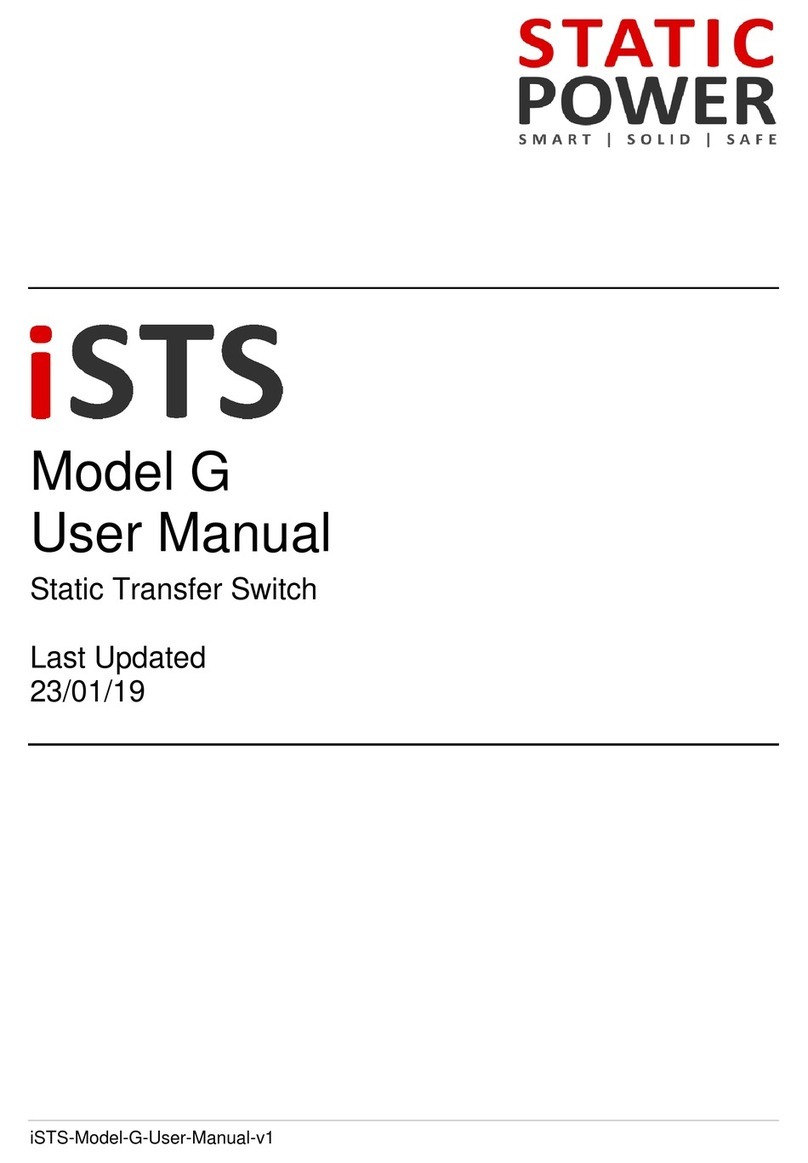
Static Power
Static Power iSTS G User manual
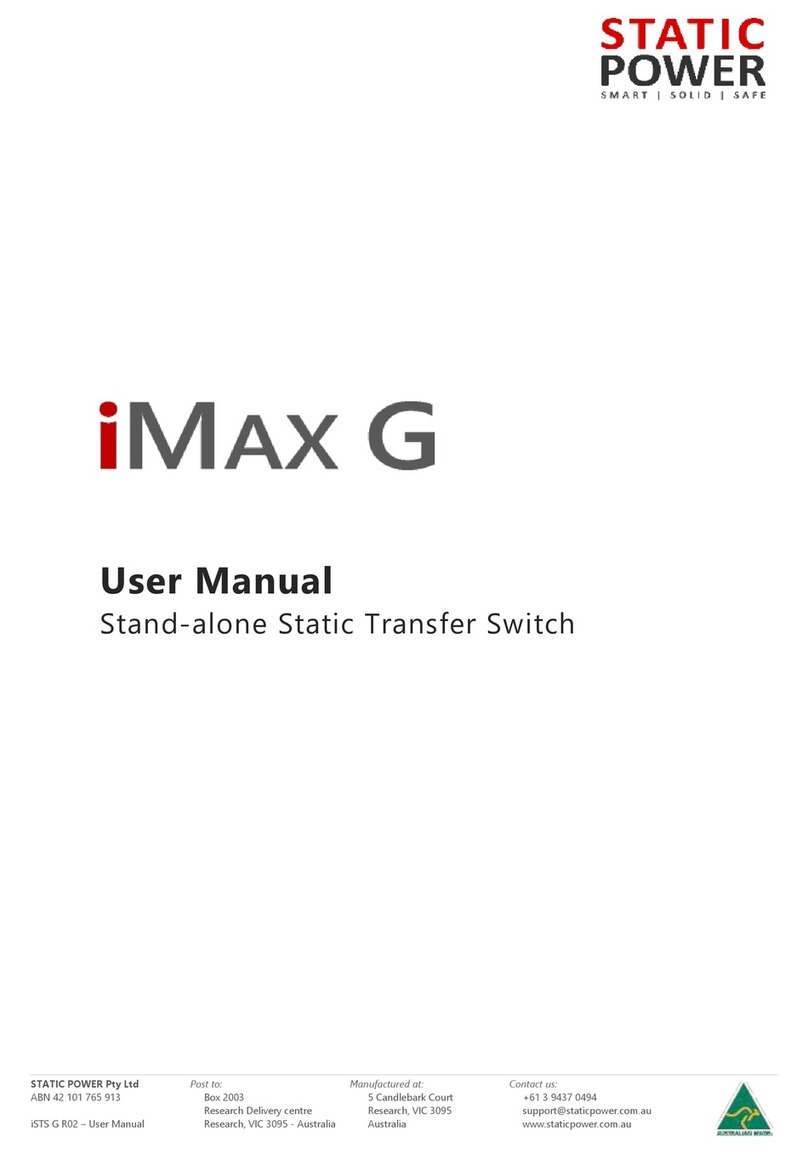
Static Power
Static Power iMax G User manual
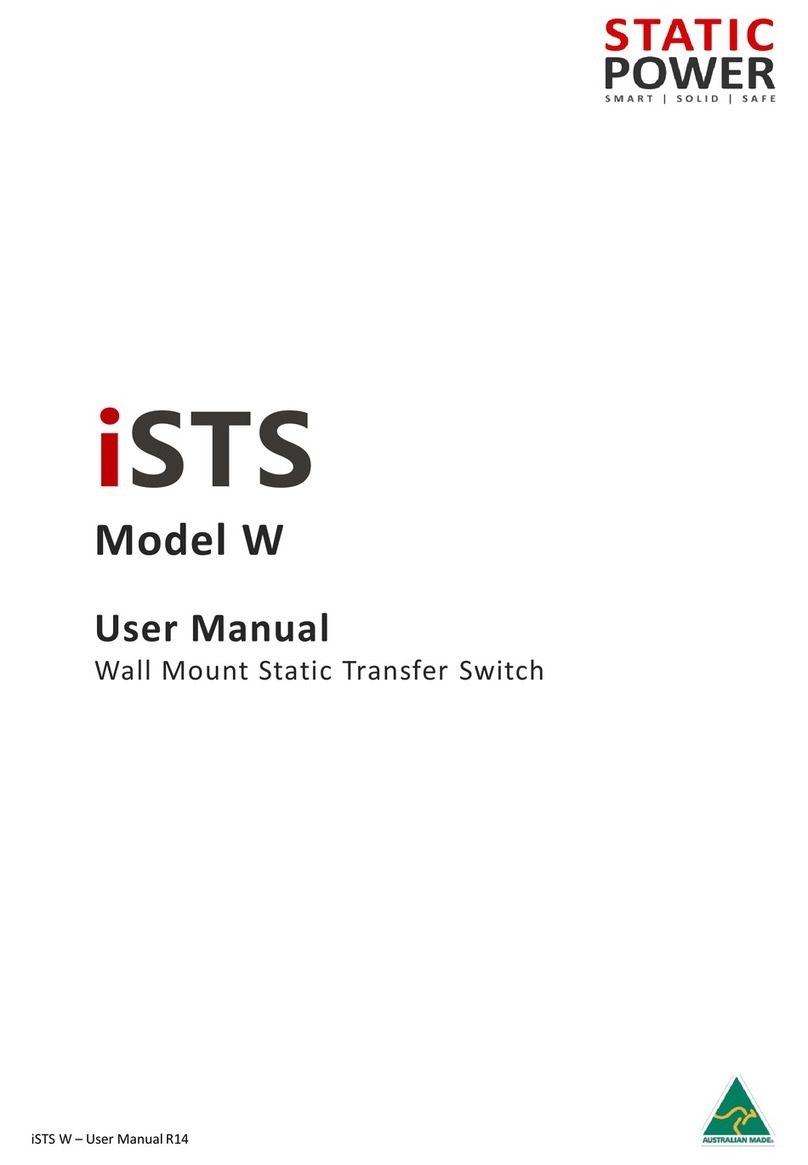
Static Power
Static Power iSTS W User manual
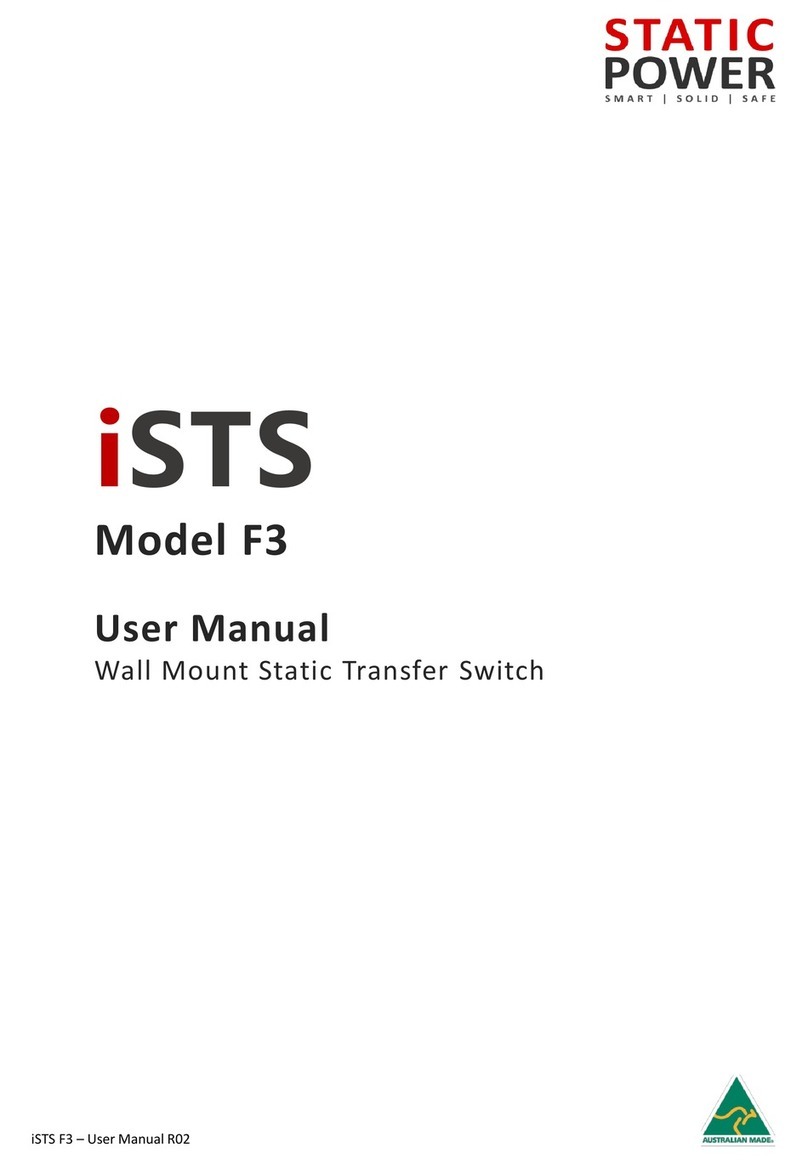
Static Power
Static Power iSTS F3 User manual
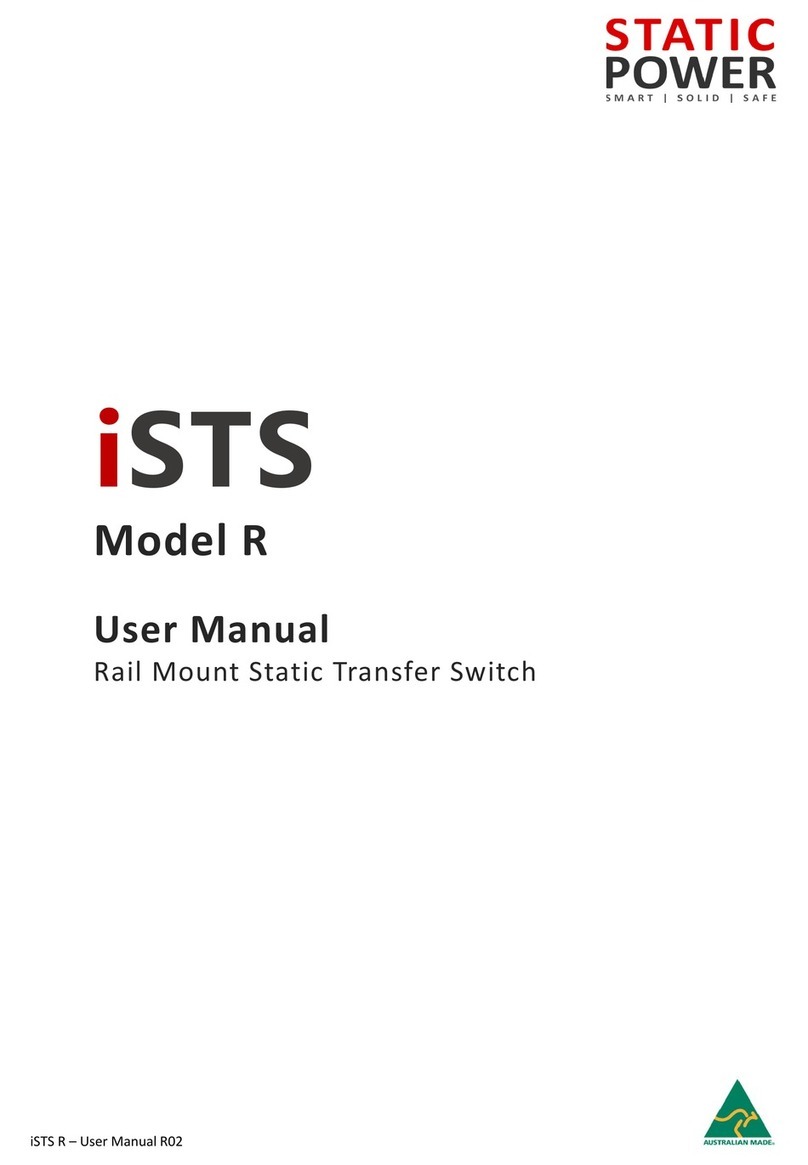
Static Power
Static Power iSTS R User manual
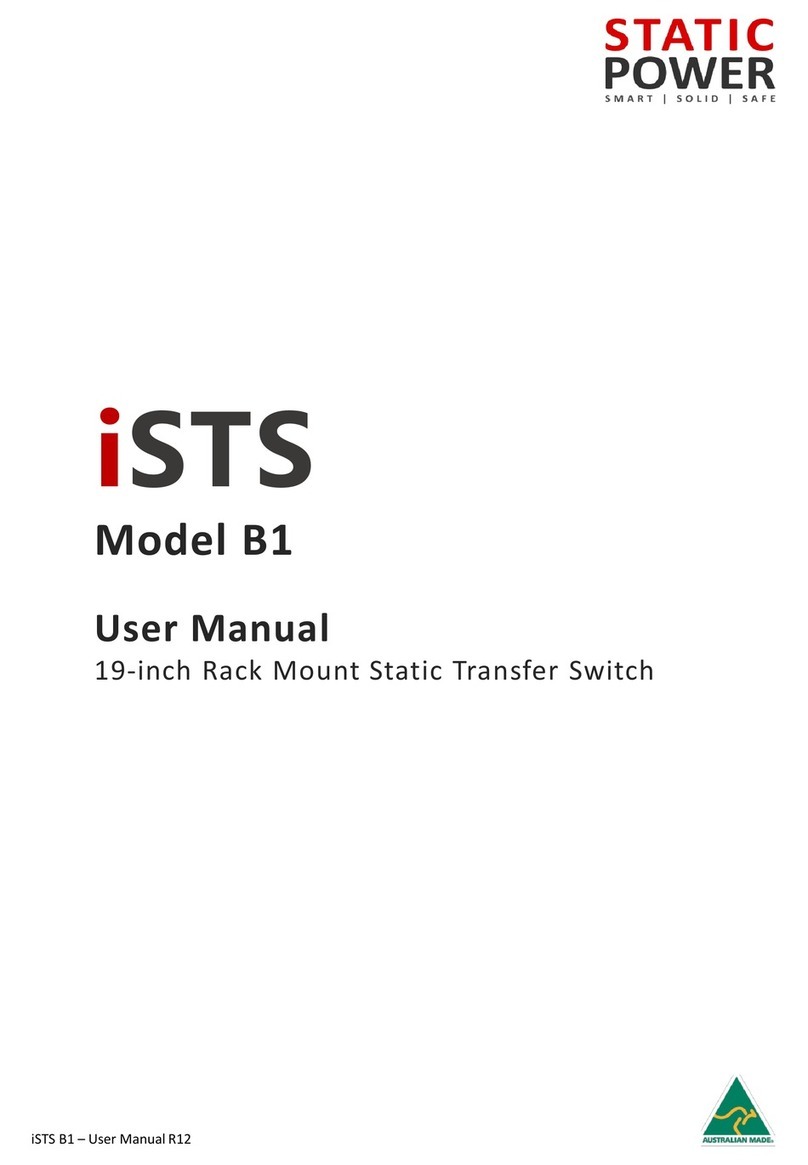
Static Power
Static Power iSTS B1 User manual
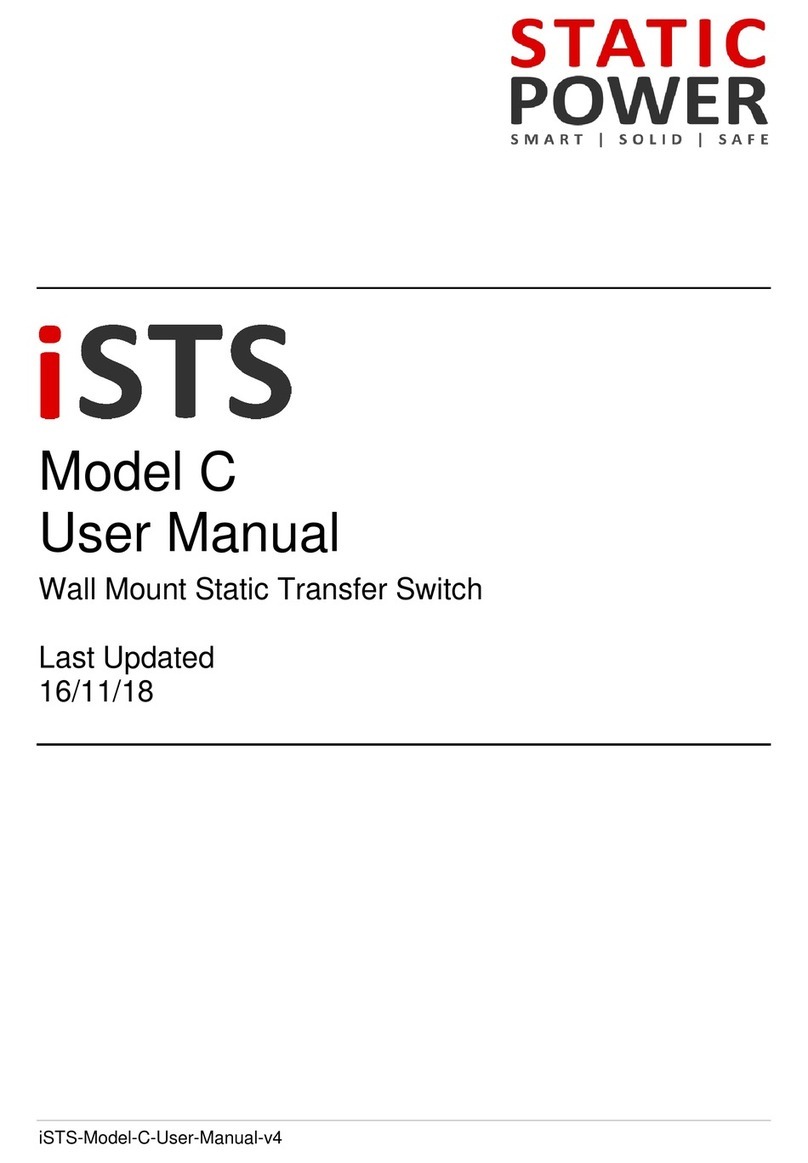
Static Power
Static Power iSTS C User manual

Static Power
Static Power iSTS R User manual
Popular Switch manuals by other brands

ANTAIRA
ANTAIRA STW-611C user manual

Cisco
Cisco Catalyst 2960-S Series Started guide
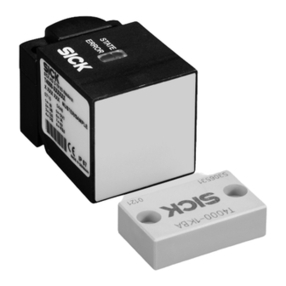
SICK
SICK T4000 Direct Unicode operating instructions
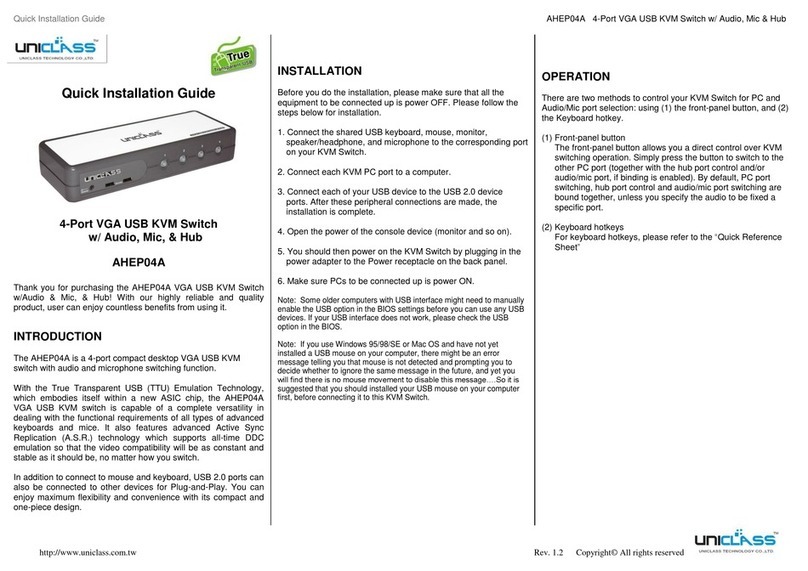
Uniclass
Uniclass AHEP04A Quick installation guide
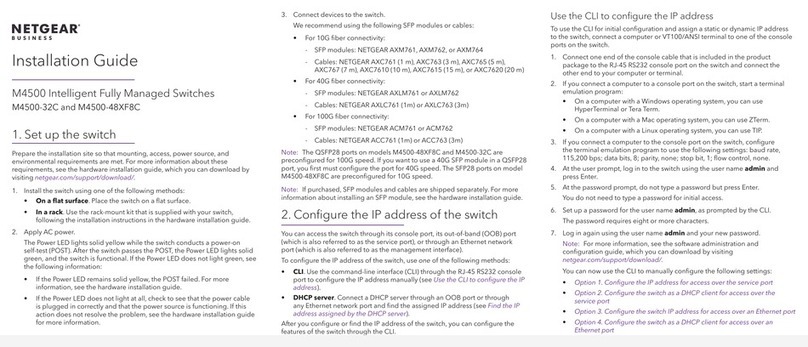
NETGEAR
NETGEAR M4500 Series installation guide
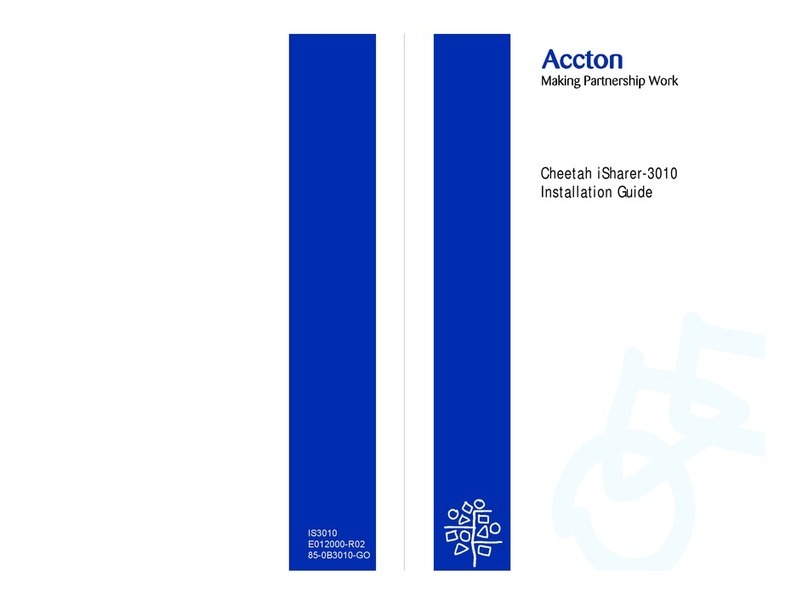
Accton Technology
Accton Technology Cheetah iSharer-3010 installation guide
